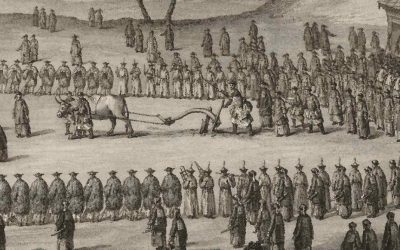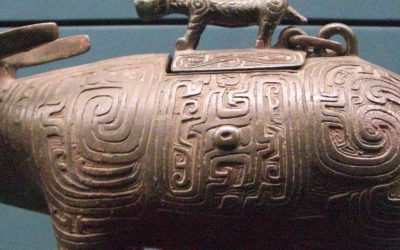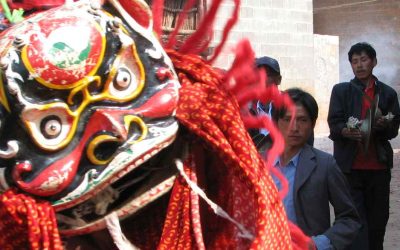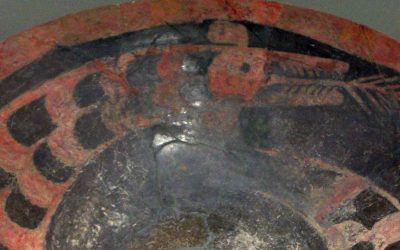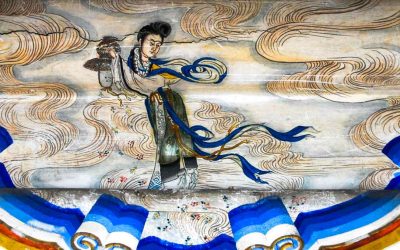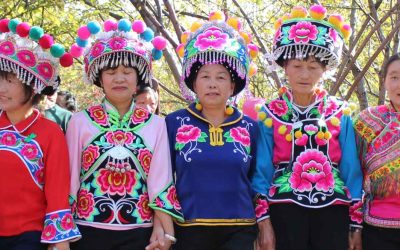The truth about the Great Wall
What would later come to be known as the Great Wall formed as a response to increased Mongol raiding after Esen was killed in 1455. Having failed to capitalize on the capture of Zhengtong, Esen lost the political momentum that had held the disparate Mongol groups together. The ensuing civil war spread into Chinese territory as warring factions sought economic resources to support their military efforts. One faction moved into the Ordos region, now no longer supervised by a Ming garrison, placing the Mongols squarely against Ming territory. The Mongols still wanted to present tribute, and receive gifts in return, and to trade with the Ming; failing that, they raided. Meanwhile, the Ming court was Itself distracted by Zhengtong’s return to power in a coup d’état in 1457. Jingtai died of illness or was poisoned, and Zhengtong resumed as emperor with a new reign period: Tianshun.
It was difficult to establish a consistent policy toward the Mongols given their ongoing wars, a situation further exacerbated by Tianshun’s weak leadership. A proposal to launch a campaign to retake the Ordos and establish garrisons, fortified positions, and agriculture, and so maintain control of the area, was approved, but nothing came of it. Further proposals for offensive action were sanctioned and left unfulfilled. In the interim, some commanders suggested pulling back to more hilly areas to the south that were easier to defend. This too was rejected. In 1471, Yu Zijun submitted a plan to build wall between Yansui and Qingyang to aid in defense.
A wall-based defense was expensive to construct and of questionable effectiveness. Yet the court did not have the will to devote the economic and military resources necessary to launch its desired offensive. Wall building won out because it was cheaper than any offensive; the first two long walls were finished in 1474, one 129 miles long and the other 566 miles long. Over the next century more and more walls were built; in many places there were actually two lines, with forts and watchtowers, evolving into what we now know of as the Great Wall. Although the walls were useful, they were never intended as a complete solution to the Mongol problem. The difficulty was that the same economic, political and military problems continued to obtain, leading successive generations through the same debate that put additional resources into wall building. The short-term question was how to make the wall system more effective, since the long-term problem of the Mongols could not, apparently, be solved.
Peter Lorte. War, Politics and Society in Early Modern China 900-1795. Routledge. London and New York. 2005. P. 124
About me: I have spent 30 years in China, much of the time traveling and studying this country’s culture. My most popular research focuses on Chinese characters (Chinese Characters: An Easy Learning Method Based on Their Etymology and Evolution), Matriarchy in China (there is a book with this title), and minority cultures (The Naxi of Southwest China). In my travels, I have specialized in Yunnan, Tibet, the Silk Road, and other lesser-known places. Feel free to write to me if you’re planning a trip to China. The agency I collaborate with offers excellent service at an unbeatable price. You’ll find my email below.
Last posts
The ox and the ritual plow in springtime
The ox and the ritual plow in springtime Throughout the imperial era, every year the beginning of agricultural work was celebrated by a solemn ceremony called the Plowing Festival. "The emperor himself would take a yellow plow attached to a yellow ox (yellow was the...
The bull and the political development of Neolithic China
The bull and the political development of Neolithic China Since the history of the penetration of domestic cattle in China goes parallel to that of the political concentration that gave rise to the first cities and later to the first states, that slow penetration of...
THE LION-DANCE AS RELIGIOUS DANCE
THE LION-DANCE AS RELIGIOUS DANCE The lion-dancers first appeared in China under the Tang dynasty (a.d. 618-906), and made their debut at the court of the kings of Tibet about the same time. The lion-dancer represents a form of the Indian mime or burlesque juggler,...
Taosi. The first capital of China
Taosi. The first capital of China Taosi is one of the most important archaeological discoveries in China in the past decades. Located in the southern part of Shanxi province, is possibly the first urban center emerged in China. The excavation of the ancient city of...
Who is this Goddess of Heaven scattering flowers?
Who is this Goddess of Heaven scattering flowers? When we arrive in a country with a culture as different as China, it is as if a fog blanket covers our eyes, allowing us only a blurred vision of everything around us. Then we recognize the characters in their writing...
Why do you must visit a Chinese park?
Why do you must visit a Chinese park? Many experienced travelers to China include in their programs the visit a neighborhood market thinking that the essence of the culture of the people is concentrated there. And they have their point, but not only in the market you...





